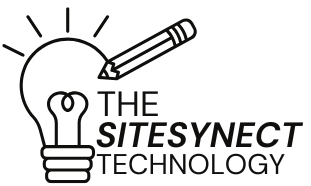How AI is Shaping the Future of Remote Work
Discover how AI is transforming remote work in 2024! From smart collaboration tools to burnout prevention, learn how AI boosts productivity, security, and well-being.

Introduction: The AI-Driven Remote Work Revolution
The shift to remote work isn’t slowing down—it’s evolving. By 2025, 70% of teams will rely on AI tools to collaborate, stay productive, and secure data across time zones. From eliminating meeting fatigue to predicting burnout, AI is transforming remote work from a necessity into a strategic advantage. Here’s how businesses and employees can harness AI to thrive in the hybrid era.
5 Ways AI is Redefining Remote Work in 2024
1. Smarter Collaboration Tools
AI-powered platforms like Zoom IQ and Microsoft Copilot are cutting through the noise of remote teamwork:
-
Auto-Summaries: Get meeting transcripts with key takeaways and action items.
-
Real-Time Language Translation: Break language barriers in global teams.
-
Smart Scheduling: AI finds optimal meeting times across time zones.
Pro Tip: Tools like Slack AI prioritize urgent messages, reducing inbox overload by 40%.
2. Productivity Monitoring (Without the Creep Factor)
Modern AI tools focus on outcomes—not screen time:
-
Time Management: Apps like Clockwise auto-block focus time on calendars.
-
Task Prioritization: Todoist’s AI suggests daily goals based on deadlines.
-
Burnout Alerts: Platforms like Lattice analyze communication patterns to flag stressed employees.
3. Hyper-Secure Remote Environments
AI is the new frontline defense for distributed teams:
-
Behavioral Biometrics: Tools like Darktrace detect anomalies (e.g., unusual login locations).
-
Phishing Prevention: Abnormal Security uses AI to block sophisticated email scams.
-
Automated Compliance: Vanta ensures remote workflows meet GDPR or HIPAA standards.
4. AI Recruiting & Talent Retention
Remote hiring goes global—and AI streamlines the process:
-
Bias-Free Hiring: HireVue analyzes skills over resumes, reducing unconscious bias.
-
Skill Gap Analysis: Degreed recommends courses to upskill remote teams.
-
Retention Predictions: Pymetrics flags flight risks using engagement data.
5. Personalized Work Environments
AI tailors the remote experience to individual needs:
-
Ergonomic AI: Apps like Posture++ remind you to adjust your workspace.
-
Mental Health Support: Woebot offers CBT-based chats to combat isolation.
-
Adaptive Learning: Platforms like Udacity use AI to customize upskilling paths.
Real-World Success Stories
-
Tech Startup: Used Otter.ai to cut meeting follow-ups by 6 hours/week.
-
Marketing Agency: GrammarlyGO reduced content revision time by 50% for remote writers.
-
Healthcare Nonprofit: NordLayer’s AI VPN secured patient data across 20+ home offices.
Benefits vs. Challenges
✅ Pros:
-
30%+ boost in productivity (McKinsey).
-
Cost savings from reduced turnover and office space.
-
Inclusive hiring from a global talent pool.
⚠️ Cons:
-
Privacy concerns with productivity tracking.
-
Over-reliance on AI may dilute human connection.
-
Technical barriers for non-tech teams.
Conclusion: Embrace AI to Master Remote Work
AI isn’t here to replace remote teams—it’s here to amplify their potential. By automating grunt work, enhancing security, and fostering inclusivity, AI tools empower businesses to build resilient, future-ready remote cultures. The question isn’t if you’ll adopt AI, but how fast.
What's Your Reaction?
 Like
0
Like
0
 Dislike
0
Dislike
0
 Love
0
Love
0
 Funny
0
Funny
0
 Angry
0
Angry
0
 Sad
0
Sad
0
 Wow
0
Wow
0






































